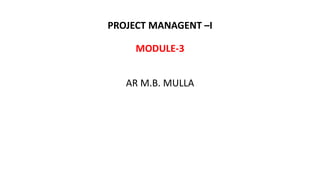This document discusses project management roles and scope management. It begins by outlining the roles and responsibilities of a project manager, including scope planning, definition, verification and control. It then discusses the need for construction project management due to potential conflicts between objectives and constraints. The key functions of project management for construction are specified, including directing resources to achieve objectives, specifying plans, efficient resource use, implementation, and conflict resolution. Principles of project management are also outlined, such as having a clear project structure and goals. The document concludes by discussing verification and control project management stages.























































